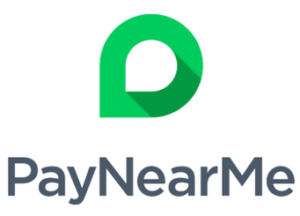By John Minor, Chief Product Officer for PayNearMe Jan 5, 2021

We all know the types of problems that can get in the way of a smooth payment transaction: exceptions, fraud, compliance concerns, human error, insufficient funds, and overloaded customer service teams, to name a few.
What if you could address a substantial number of those problems with one straight-forward strategy? I’m referring to payment automation, the practice of programming functions that can be done without human intervention so your staff can focus on the most important tasks.
People-Focused Automation
Some companies have avoided automation because they equate it with impersonal customer service. That’s far from the truth. Automation doesn’t just benefit companies by saving them personnel costs and payment hassles. It enhances the customer experience as well.

Consider that 75% of consumers surveyed by Nuance Enterprises said they prefer self-service to address support issues, yet 59% were frustrated they had to reach out to a customer service agent because they could not resolve the issue themselves. Your customers want to handle bill payment tasks in the smoothest, most efficient, and independent way. They need the right automation in place to do it.
Today’s modern payment platforms provide the technology to manage customer relationships around recurring bill payments, making self-service accessible for all. They help deliver the smooth experience and menu of payment options customers have come to expect with the flexibility, security, and reliability businesses need. When you consider that bill payment may be the most frequent – or only – touchpoint you have with your customers, it’s critical to get it right.
Automation also benefits another group of people: your staff. Well-designed tools enable your customer service agents to have the right information at their fingertips to do their jobs. This frees their time to focus on handling the more complex bill payment issues and tasks because customers are handling straight-forward transactions automatically and independently.
Finally, automation reduces your risk and compliance burden by limiting tasks like data entry and payment information collection. It sets up your company to expand and handle more orders or loans without requiring capital or personnel investments.
Five problems solved through automation

If you’re convinced that automating elements of your bill payment process is a win, how should you get started? First, identify your most common problems and look for ways automation can offer a solution. Here are five examples:
Problem 1: Payment exceptions and fraud
Automation Solution: Use logic-based business rules to automatically flag higher-risk accounts and change their payment options. For instance, the rule can state, “If a customer has triggered an NSF two or more times during the last 180 days, remove the ACH option and only allow cash or card payments.”
Problem 2: Overload of inbound calls
Automation solution: Many customers call because they can’t put their hands on the right information when they need it (“What’s my account number?” “What’s my balance?” “What’s my interest rate?”). Use custom fields and logic to show customers the right information at the right time, allowing them to solve issues without contacting customer support.
Problem 3: Unnecessarily long customer service calls
Automation solution: Provide agents with account history as soon as they engage with a customer to reduce the number of minutes they must spend responding to the customer’s issue. For example, you can have payment error alerts automatically posted on a customer’s account page, so the agent doesn’t have to search for what went wrong with the customer on the line.
Problem 4: Late payments
Automation solution: Send automated, personalized messages to customers to prompt on-time payment. These messages can be highly segmented based on payment history, due dates, preferred communications channel (eg push notification, text, email), and language. For example, a customer with a history of late payments may get more messages and more urgently worded messages to help drive action.
Problem 5: Reconciliation delays
Automation solution: Reduce reconciliation time by selecting a payment solution that automatically delivers detailed reports daily. The automated collection of data expedites the process and allows you to customize the reports with exactly the information you need.
Partnering with Your Bill Pay Provider

There’s no limit to the problems you can solve using automation. The key is to clearly define what you want to automate and why, and then work with your payment vendor to build the solution. For instance, if you want to prevent a customer from paying more than his or her total balance, you can 1) add custom fields to capture the necessary data (ie the balance amount and payment amount) and then develop a business rule that triggers the desired response using that data: “If the payment amount exceeds balance amount, or if balance is less than X percent of the loan, disable online payment and direct the customer to call customer service.” The customer will then be instructed on the exact amount of payoff to avoid a time-consuming refund.
Although automation tools are not new, few payment platforms offer ready-made options. Some vendors will offer to custom-code these processes, which can be expensive and time-consuming, while others require you to add third-party tools that may prove incompatible.
Modern payment platforms have circumvented that roadblock by offering a menu of standardized automation options, which can be turned off and on easily or quickly adapted to meet specific needs. This appeals to many billers that want responsive solutions without the disruption of downtime.
Finally, look for a payment vendor with innovative software designed specifically for bill payment automation. The technology should connect biller and customer data in one fluid and integrated system to deliver flexible, frictionless bill payment time after time.
Payment collections may never become completely problem-free. However, when you incorporate automation tools that solve your problems, support your staff, satisfy your customers, and smooth your bill payment process, you’re a long way toward that goal.
About the Author:

John Minor is Chief Product Officer for PayNearMe, leading the product, merchant services, and support teams. By combining industry research with client and partner feedback, John ensures that PayNearMe’s solutions continue to lead the market in terms of mobile readiness, ease of use, and advanced bill pay and collection techniques. He plays a critical role in continuing the company’s path of innovation and commitment to making it easy for businesses to collect every payment, via any channel and payment type, every time. John has more than two decades of product development experience in both the mobile and payment arenas. He has held leadership roles at Jasper Wireless, Good Technology, and Motorola, where he helped the company launch its first Android phone.
Recent payments automation coverage:
Beanworks acquisition highlights payments automation growth
Navigating payments automation, COVID impact, and finding success








LET’S CONNECT